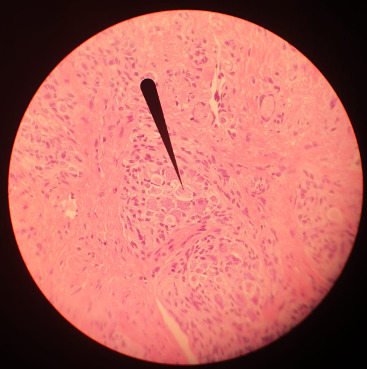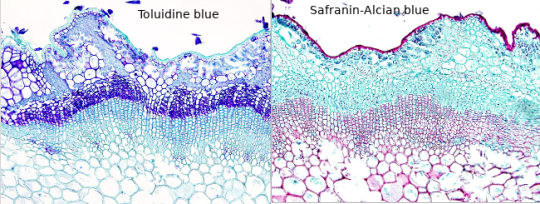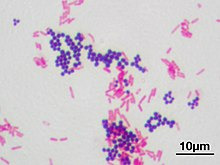#and i think I've already posted a response somewhere that I genuinely didn't enjoy writing that fic cuz it feels a bit... tamer than
Explore tagged Tumblr posts
Note
creative difference part 2??
Sorry but no lol. Maybe next time.
Side note: i feel bad receiving "part 2" messages because even when I do write part 2s, the people who asked for it usually don't give feedback or any sort of response lol so no thank you kind sirs/maams but i do appreciate that you think it's worthy of a continuation.
I think i do have a tag for that fic tho, #tag: cd - tighnari". Idk if I left around crumbs or something.
#ansy-stalks#and i think I've already posted a response somewhere that I genuinely didn't enjoy writing that fic cuz it feels a bit... tamer than#what i usually write hAHAHAHAHAH#tag: cd - tighnari
7 notes
·
View notes
Note
Thank you so much, Mr. Holmes! I really appreciate your response. It must take loads of time to compile all of this information and write it down in a post, and the fact that you are taking the time to answer a teenager about their questions instead of working on cases and doing your own experiments is truly heartwarming. Sorry for taking so long to reply! These past days have been quite hectic. About me being a beginner, I really appreciate your kindness. I've gone through some online communities on the topic, and some people have not been so kind. Guess people forget that they all start somewhere, huh? I will for sure take your advice on drawing the structures! It should help me remember them more easily, right? Memory is usually bound to vision, at least to me, and seeing and writing stuff down does help. About the website, I audibly gasped and said 'this is amazing!" before I even noticed I was talking. So, my opinion on it must be pretty clear. Thank you so much for sharing it with me, I'm now wondering how I didn't find this before. And thanks for the warning on the 'macroscopic organs' situation: I'm not sure if I would be disgusted or not, but considering I've gone to those university labs that store organs and dead bodies (I forgot the name, I'm unsure if those are called morgues or not), I think I should be fine. I even held a brain, a heart (that was in half) and a fetus!!! I was more excited and fascinated about it than I probably should have been, given my age (and the fact that people usually get disgusted), but the experience was great. About the stains and equipament, I appreciate your concern, and I do agree with all you said. I will look into safer (and cheaper) alternatives and see what is best for what I'm looking for given my situation (and if you want, I can even share my progress! Would you want that? It's a genuine question, so feel free to be blunt!). I also enjoyed the fact that you said 'when you study biology', and not 'if'. You assumed correctly, as I'm aiming for med school. Props to you! I will most definitely take care of my slides! I already took great care of them before, but with your testimony, I'll be even more careful. They should be of great use when studying, especially if I get in med school. Thank you, once again!
Hello, Mr. Holmes! How are you?
So, long story short, I ended up with an optical microscope in my room more or less 4 months ago, with 200 previously made slides (secured in a proper box), and lots of new ones too, for me to prepare myself. I love microbiology (it's one of my hyperfixations, curse my neurodivergency) and now I love it even more (my mother has had to drag me away from the microscope - I named it Wesley - in the middle of the night multiple times now).
After much conversation, I finally convinced my mom to buy me the proper equipment to prepare the slides!
So, I'm sending this ask to you, as I know you also have a microscope and that you use it a lot: what kind of equipment do you recommend me buying (gloves, scalpel blades, tints, etc), while still remembering that all of the stuff needs to stay in my room (properly taken cared of by me, of course)?
For example, I'm unsure if different dyes are used for different smears and specimens due to it's affinity (I've noticed that on 'organic matter' slides, images are usually tinted purple or pink, while on plant-based slides, images are usually tinted green and blue, with a few red structures.) Considering that I don't have access to a mortuary, I will mostly make plant slides. There must be a difference in the dyes then, right?
Sorry for the long text! Hope this isn't too much of a bother.
- a 17-year-old :)
Congratulations on your new light microscope. I do hope you get the best out of it. I am overjoyed that someone else appreciates the art of microscopy and microbiology.
However, you need to be careful to not strain your eyes. It is recommended to take breaks every 15 minutes to close your eyes or focus on something in the distance to reaccommodate your eyes. And get up every 40 minutes, stretch and correct your posture. And it is recommended to not use a microscope more than 5 hours per day. John has to chase me away from my microscope sometimes to take a break when I sit there for hours, my posture like a Caridea.
Concerning equipment, you will obviously need a scalpel or other sharp blade to make very thin slices of your specimen, as thin as possible. And forceps to move your samples (best just get a whole dissection kit it has everything). Obviously slides and coverslips, pipettes for the stains or water, maybe some tubes. A pen to label your slides. In many staining procedures ethanol or acetone is also used. A waste jar to safely dispose of any chemicals, but be careful what you mix. A rack for staining and containers. I would recommend nitrile gloves, some people are sensitive to latex.
The dyes you use depend on the specimen. For example in histological slides of tissues hematoxylin and eosin are most commonly used (short HE-stain). That's what you most likely saw on your slides, it's blue, purple and pink. Hematoxylin is a basic compound extracted and oxidised from the logwood tree (Haematoxylum campechianum), and it stains acidic compounds in the cells (or basophilic because they have an affinity for basic substances). For example nucleic acids like DNA or RNA get stained by hematoxylin because they are basophillic. And where are lots of nucleic acids? In the nucleus and ribosomes, that is why they appear blue to purple in the staining because they bind hematoxylin. Eosin is an acidic compound, and stains basic or acidophilic compounds red or pinkish, like proteins, collagen, cytoplasm, extracellular matrix.

(Ductus epididymidis with HE-stain)

(Tongue HE-stain, pointer marking a ganglion; that is my picture)
Of course there are more specific stains for specific tissues like Golgi's silver staining for neurons.
For plants toluidine blue is often used, high affinity for acidic tissues, and can stain blue to green to purple. It is often combined with safranin, a basic azine, which is probably the red stain you saw. It stains polysaccharides and lignin, woody parts of the plant. Safranin and astrablue is also often combined, astrablue stains non-lignified parts of the plant.

(Ulex europaeus stem; not my pictures I don't have any samples currently, source Atlas of plant and animal histology)
Safranin is also used in bacteriology, in the famous Gram staining. In Gram staining you use crystal violet (blue/purple), Lugol's iodine solution, then wash it with ethanol and add safranin (red) as a counter stain. Bacteria is gram-positive if the crystal violet stays in their thick murein cell wall, can't be washed out with the ethanol and the bacteria stays blue. Gram-negative appear red because of the counterstain.

(Staphyloccocus aureus (violet, gram positive) & Escherichia coli (red, gram negative); not my picture, source Wikipedia)
However, I am not sure whether you have access to any of those substances, if they are too expensive for you or if they are too hazardous if used in your own room for a prolongued time. Of course those substances need to be stored properly, and your own room is probably not a good place, especially for ethanol or acetone. The fumes. I would recommend to ask your biology or chemistry teacher whether they can recommend anything further and where to buy said solutions in your area, and if they can't they are idiots. There are also many useful resources and tutorials on Youtube.
Another fascinating experiment for your microscope, that you can perform without buying any chemicals, is a hay infusion. You put hay into a container filled with water, and let it sit undisturbed for a week in a sunny area but not in direct harsh sunlight. During that time the microorganisms in the hay are reproducing in the solution, feeding on the polysaccharides of the hay. Protozoans also flourish in the hay infusion and eat the bacteria. It might get cloudy and a bit foul smelling (best not do it in your own room if you don't want to sleep next to a rotting smell). When you put a drop of the solution onto a slide and look at it in the microscope, you should see a variety of microorganisms like bacteria (like Bacillus subtilis), amoeba, ciliates, heliozoa, algae et cetera. At different depths of the liquid you should find different kinds of organisms, because of differing oxygen content. However, pathogens can also occur in the hay infusion so handle it carefully and work sterile, wash your hands properly.
And even if you don't work at a morgue you can still get tissue samples to experiment on, after all meat is sold in supermarkets, basically the same as a human body. And at the butchers they even sell organs like chicken hearts, pig kidney, liver, blood et cetera. Or observe your own hair under the microscope.
Which kind of samples and slides were included in your starter kit? Be careful to not leave them lying around in the sunlight, or the stain might fade. Always store them in the proper box.
47 notes
·
View notes